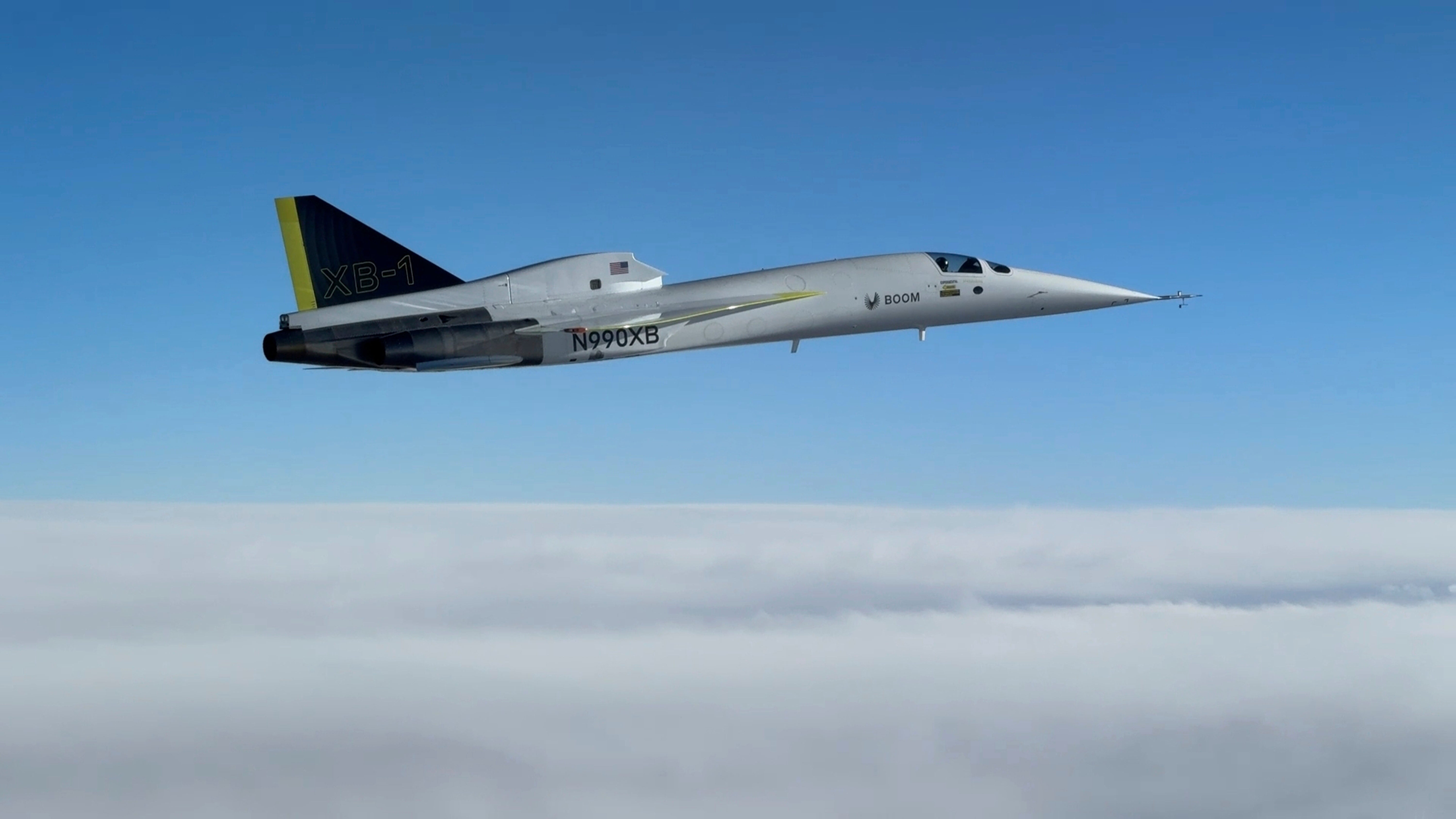First independently developed jet breaks the sound barrier over the California desert
A sleek white aircraft has become the first independently developed jet to break the sound barrier

Your support helps us to tell the story
From reproductive rights to climate change to Big Tech, The Independent is on the ground when the story is developing. Whether it's investigating the financials of Elon Musk's pro-Trump PAC or producing our latest documentary, 'The A Word', which shines a light on the American women fighting for reproductive rights, we know how important it is to parse out the facts from the messaging.
At such a critical moment in US history, we need reporters on the ground. Your donation allows us to keep sending journalists to speak to both sides of the story.
The Independent is trusted by Americans across the entire political spectrum. And unlike many other quality news outlets, we choose not to lock Americans out of our reporting and analysis with paywalls. We believe quality journalism should be available to everyone, paid for by those who can afford it.
Your support makes all the difference.A sleek white aircraft became the first independently developed jet to break the sound barrier Tuesday, tearing through the air tens of thousands of feet above the Mojave Desert and a crowd of delighted onlookers.
The XB-1 aircraft accelerated to Mach 1.05 within about 11 minutes of taking off, according to Boom Supersonic and live video of the test flight.
The flight at the Mojave Air & Space Port in Mojave, California, took place as the company works to revive supersonic passenger travel, which died with the grounding of the Anglo-French Concorde more than two decades ago.
Boom plans to focus next on the Overture airliner, which it says will carry as many as 80 passengers while moving at about twice the speed of today’s subsonic airliners.
“XB-1’s supersonic flight demonstrates that the technology for passenger supersonic flight has arrived,” Boom founder and CEO Blake Scholl said in a statement. “A small band of talented and dedicated engineers has accomplished what previously took governments and billions of dollars.”
The aircraft, which flew for the first time in March, is made almost completely from lightweight carbon fiber. It uses an augmented reality vision system to help with landing, since its long nose and high-angle approach can make it difficult for pilots to see.
“The future of aviation is here and now,” Amy Marino Spowart, president and CEO of the National Aeronautic Association, said in a statement. “Not only is there hope for faster and better commercial flight, but Boom proves that it can be done sustainably.”
Boom is one of several companies with an eye on supersonic passenger travel. Any new such service will likely face the same hurdles as the Concorde, which flew over the Atlantic and was barred from many overland routes because of the sonic booms it caused.
Sonic booms are heard on the ground when airplanes fly faster than the speed of sound — typically about 760 mph (1,223 kph) near sea level but varying depending on temperature, altitude and other conditions, according to the Congressional Research Service.
As a supersonic plane speeds through the air, it pushes molecules aside with great force, forming a shock wave “much like a boat creates a wake in water,” according to NASA.
Tuesday’s flight happened in the same airspace where in 1947 Charles “Chuck” Yeager became the first person to break the sound barrier, piloting an orange, bullet-shaped Bell X-1 rocket plane.